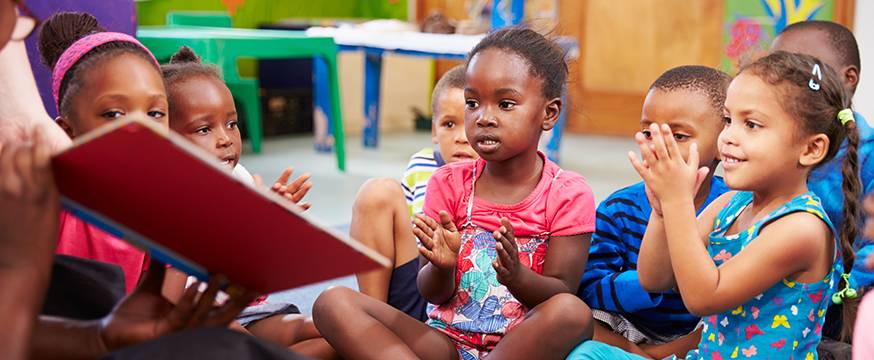
Teaching early literacy through play
Research 24 Sep 2019 7 minute readDan Cloney and Kellie Picker explore practical literacy activity ideas designed to build children’s oral language skills.
The Australian Literacy and Numeracy Foundation (ALNF) has engaged ACER to investigate how preschool services support children to develop language and literacy skills and help them get ready for school. The Overcoming Disadvantage in Early Childhood (ODEC) study helps describe the benefits gained by children when they attend high quality early childhood services.
Find out more:
Kellie Picker and Dan Cloney are presenting at our fully online Research Conference 2021. Register now!
The study focuses on the impact of the ALNF’s Early Language and Literacy Program, which aims to equip educators, parents and community members with the knowledge and tools required to develop children’s foundational language and literacy skills. The Early Language and Literacy Program includes an accredited Certificate IV course for educators that combines speech and language pathology and early years education best practice.
“The idea is for children to have fun while playing with and thinking about the words and sounds”
The study is targeting early childhood education and care (ECEC) services on the Mid North Coast of New South Wales (NSW), where children are receiving fewer hours of ECEC on average than other children in Australia – more than 30 per cent of four-year-old children on the NSW Mid North Coast are missing out on the 15 hours offered under the Universal Access to preschool policy. The ALNF’s Early Language and Literacy Program has been delivered in schools and ECEC services in this area for more than ten years.
In the first two years of the ODEC study, the ACER team worked one-on-one with 442 children from 22 early childhood centres and more than 40 schools to measure their growth in oral language and literacy skills, paying particular focus on skills within the areas of vocabulary, phonological awareness, comprehension, oral language, print conventions, reading and writing.
Below we take a closer look at phonological awareness. Research shows that phonological awareness skills, in particular phonemic awareness, are important foundational skills for later literacy development. In the activities we complete with children, we are looking to see if children can demonstrate the following kinds of skills. For each skill we give an example of how children may demonstrate their ability.
| Phonological awareness skills | Activity ideas |
|---|---|
| Word awareness |
|
| Rhyming |
|
| Syllables |
|
| Phonemic awareness – Isolation: initial sounds |
|
| Phonemic awareness – Phoneme segmentation |
|
| Phonemic awareness – Phoneme blending |
|
The activities are listed from the easiest at the top, to the more difficult at the bottom. The idea is for children to have fun while playing with and thinking about the words and sounds they use in everyday life.
There are similarities between these activities and the activities used in early childhood programs. That is because the activities take into consideration Outcome 5 of the Early Years Learning Framework, Quality Area 1 of the National Quality Standard and the English strand of the Australian Curriculum. These kinds of activities are also seen in the ALNF’s Early Language and Literacy Program, including the 7 Steps to Phonemic Awareness strategies and game kit.
Ensuring that the skills described above are embedded within other literacy activities, such as nursery rhymes, poems, finger plays, stories, songs and themes, is an important step to ensure all children get access to high quality early childhood experiences. ■
Find out more:
Kellie Picker and Dan Cloney are presenting at our fully online Research Conference 2021. Register now!
